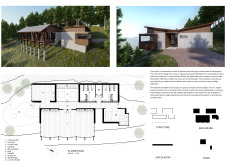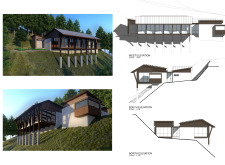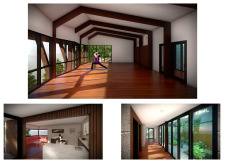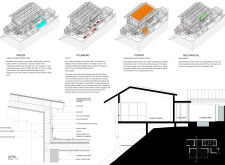5 key facts about this project
Sustainable Design Approaches
The project is notable for its commitment to sustainability and ecological considerations. Key features include a rainwater harvesting system that captures runoff from the metal roofs, directing it to storage tanks for practical use within the facility. The incorporation of photovoltaic panels allows the complex to generate clean energy, promoting self-sufficiency. The use of precast concrete ensures durability, while wood accents add a natural touch to the interiors. Glass facades enable ample natural light to penetrate the spaces while providing unobstructed views of the landscape, enhancing the user experience.
Spatial Efficiency and Layout
In terms of layout, the design prioritizes fluid circulation and accessibility. The pavilions are strategically distributed to form a cohesive community space, with dedicated areas for specific functions. The yoga studio, designed with large windows, highlights the connection between indoor and outdoor environments, allowing practitioners to engage with nature during their sessions. The gallery space is tailored for art exhibitions, equipped with adaptive lighting and flexible wall configurations to accommodate various displays. The central courtyard acts as a communal area, fostering interaction among users while providing a serene outdoor refuge.
The architectural choices reflect a comprehensive understanding of user needs and environmental context. The juxtaposition of natural materials with structural elements not only meets functional requirements but also communicates a broader narrative of sustainable living. This project exemplifies how architectural design can effectively respond to both community needs and ecological imperatives.
For a deeper understanding of the intricacies involved in this architectural project, including architectural plans and sections, please explore the project presentation for further details. Reviewing these elements can provide insights into the unique architectural ideas that shape this design.


























